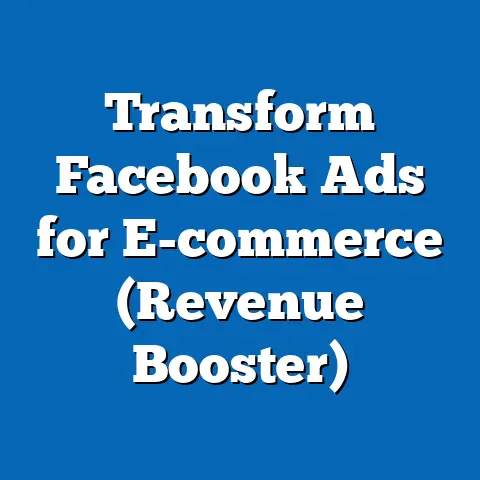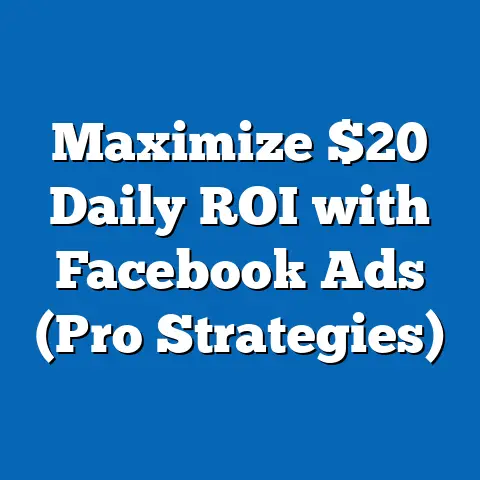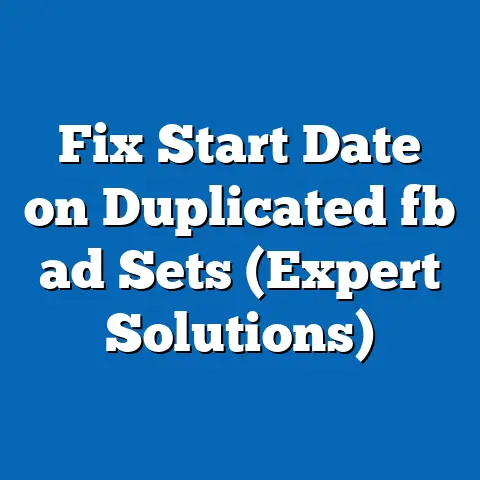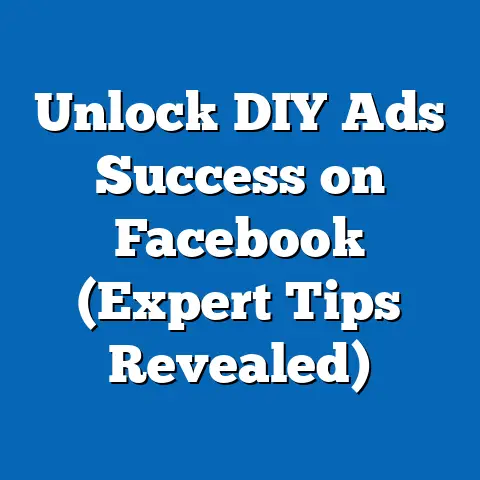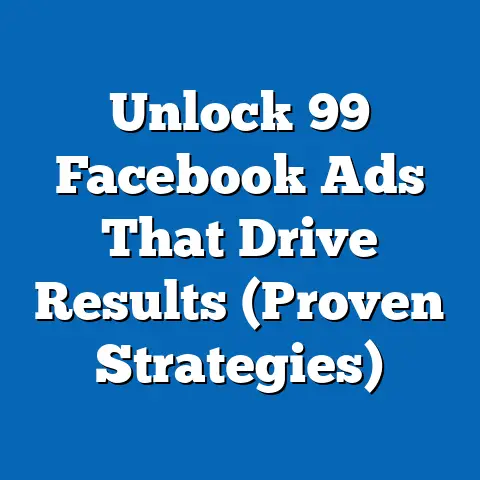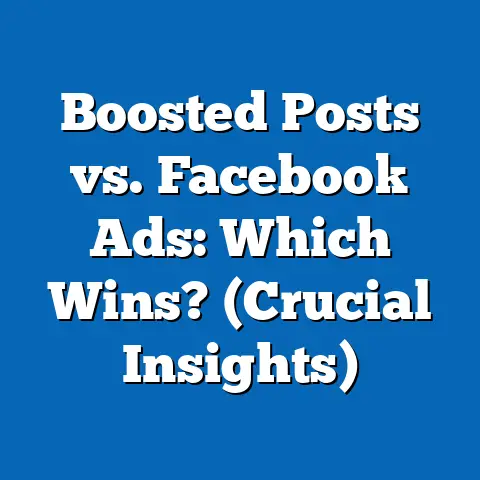Transform Annoying Facebook Ads into Engaging Content (Pro Tips)
Facebook ads. Let’s be honest, sometimes they feel like that unwanted guest at a party – intrusive, repetitive, and vying for your attention when you’d rather be chatting with friends. I’ve been there, scrolling through my feed, feeling bombarded by generic ads that just don’t resonate. But what if I told you there’s a way to transform those annoying interruptions into engaging experiences that actually connect with your audience on a deeper level? The secret? Nostalgia.
Nostalgia is a powerful force. It’s that warm, fuzzy feeling you get when you hear a song from your childhood, see a picture of a beloved toy, or smell a familiar scent that instantly transports you back to a cherished memory. It evokes emotions, creates a sense of familiarity, and offers a comforting escape from the present. And in the world of advertising, tapping into nostalgia can be incredibly effective.
Think about it: how many times have you seen a brand revive a classic product or reference a popular trend from the past and felt a surge of excitement or recognition? Companies like Coca-Cola, with their vintage-inspired campaigns, and Nintendo, with the resurgence of classic consoles, have masterfully used nostalgia to reconnect with their audience and drive sales. It’s not just about clever slogans or catchy graphics; it’s about creating a compelling narrative that resonates with the audience’s past experiences, triggering positive emotions and building brand loyalty.
In this article, I’ll share pro tips on how to transform those potentially annoying Facebook ads into engaging content that leverages the power of nostalgia. We’ll dive deep into understanding your audience, crafting nostalgic narratives, leveraging user-generated content, creating value through nostalgia, and measuring your success. Let’s turn those scrolls into smiles and those clicks into conversions!
Section 1: Understanding Your Audience: The Nostalgia Factor
Before you even think about crafting your nostalgic masterpiece, you need to know who you’re talking to. Just like any successful marketing campaign, understanding your audience is paramount.
Demographics and Psychographics: Know Your Tribe
Demographics, like age, gender, location, and income, provide a foundational understanding of your target audience. But to truly tap into nostalgia, you need to delve deeper into psychographics – their values, beliefs, emotional triggers, and, most importantly, their shared experiences.
- Age: This is crucial. What was popular in the 80s will likely resonate differently with Gen X compared to Millennials or Gen Z.
- Interests: What are they passionate about? What movies, music, and TV shows do they love?
- Online Behavior: Where do they spend their time online? What types of content do they engage with?
Understanding these factors will help you tailor your nostalgic message to resonate with the right people. For example, if you’re targeting Millennials, you might reference the early days of the internet, the rise of boy bands, or the iconic fashion trends of the 90s.
The Role of Nostalgia in Audience Engagement: A Generational Divide?
Nostalgia isn’t a one-size-fits-all approach. Different age groups connect with different eras and experiences. Here’s a quick breakdown:
- Baby Boomers (born 1946-1964): Nostalgia for the post-war era, classic rock and roll, and the space race.
- Generation X (born 1965-1980): Nostalgia for the 80s and 90s, including arcade games, MTV, and the rise of personal computers.
- Millennials (born 1981-1996): Nostalgia for the late 90s and early 2000s, including the rise of the internet, pop music, and iconic TV shows like “Friends.”
- Generation Z (born 1997-2012): While they might not have firsthand experience, they often embrace trends from the 90s and early 2000s through social media and pop culture.
I remember working on a campaign for a retro gaming console. We segmented our audience based on age and tailored the ad creatives accordingly. For Gen X, we focused on the classic arcade games they grew up with, while for Millennials, we highlighted the iconic console games they played as kids. The results were significantly better when we personalized the message.
Takeaway: Understanding your audience’s age and experiences is crucial for crafting a nostalgic message that resonates.
Section 2: Crafting Nostalgic Narratives: Tell a Story They’ll Remember
Once you understand your audience, it’s time to craft a compelling narrative that evokes those nostalgic feelings.
Storytelling Techniques: Weaving the Threads of Memory
Storytelling is at the heart of effective advertising. When it comes to nostalgia, the key is to tap into those shared memories and experiences that your audience holds dear.
- Personal Anecdotes: Share stories from your own experiences that resonate with your target audience. For example, if you’re selling a retro candy, talk about your childhood memories of enjoying that candy.
- Historical References: Referencing historical events, trends, or products can instantly transport your audience back in time.
- Relatable Characters: Create characters that your audience can identify with and that embody the values and ideals of the nostalgic era.
I once worked on a campaign for a vintage clothing store. We created a series of Facebook ads that featured fictional characters from different decades, each with their own unique style and story. The ads were a huge success because they allowed our audience to imagine themselves living in those eras and expressing their individuality through fashion.
Visual and Emotional Appeal: The Power of Sight and Feeling
Visuals are incredibly important in Facebook ads. Pair your nostalgic narrative with retro designs, vintage colors, and familiar symbols to create a more engaging experience.
- Retro Designs: Use fonts, layouts, and graphics that are reminiscent of the nostalgic era you’re targeting.
- Vintage Colors: Incorporate color palettes that were popular in the past, such as pastel colors for the 50s or neon colors for the 80s.
- Familiar Symbols: Include symbols that your audience will instantly recognize and associate with the nostalgic era, such as cassette tapes, floppy disks, or vintage logos.
Don’t underestimate the power of emotional storytelling. Use language that evokes feelings of warmth, happiness, and nostalgia. Focus on the positive aspects of the past and how those memories can enrich our lives today.
Takeaway: Combine compelling storytelling with visually appealing retro designs to create a truly engaging and nostalgic experience.
Section 3: Leveraging User-Generated Content: The Voice of the Past
User-generated content (UGC) is a goldmine for creating authentic and relatable Facebook ads. When it comes to nostalgia, UGC can be particularly powerful because it allows your audience to share their own memories and experiences.
Encouraging Audience Participation: Let Them Tell Their Stories
Make it easy for your audience to share their nostalgic memories related to your brand or product.
- Run a Contest: Ask your audience to submit photos, videos, or stories related to a specific nostalgic theme.
- Create a Hashtag: Encourage your audience to use a specific hashtag when sharing their nostalgic memories on social media.
- Host a Virtual Event: Host a live event on Facebook where your audience can share their memories and connect with each other.
Showcasing Real Stories: Authenticity is Key
Feature real customer stories or testimonials that reflect nostalgia. This will make your ads feel more personal and relatable.
- Curate UGC: Select the most compelling and relevant UGC to feature in your ads.
- Present UGC Effectively: Use high-quality photos and videos, and write compelling captions that highlight the emotional impact of the stories.
- Get Permission: Always ask for permission before using someone’s content in your ads.
I remember a campaign where we asked customers to share photos of themselves using our product in the past. We received hundreds of submissions, and we featured the best ones in our Facebook ads. The ads were incredibly successful because they showcased the product’s longevity and the positive impact it had on people’s lives.
Takeaway: User-generated content adds authenticity and relatability to your nostalgic ads, making them more engaging and effective.
Section 4: Creating Value through Nostalgia: More Than Just a Trip Down Memory Lane
Nostalgia is more than just a feel-good emotion; it can also be a powerful tool for creating value for your audience.
Educational Content: Learning from the Past
Create ads that not only entertain but also educate by revisiting historical trends or products.
- Historical Context: Provide context about the historical significance of the nostalgic theme you’re using.
- Behind-the-Scenes Stories: Share interesting facts or anecdotes about the creation of a product or the evolution of a trend.
- Lessons Learned: Highlight the lessons we can learn from the past and how they can inform our decisions today.
Promotional Strategies: Throwback Sales and Limited-Time Offers
Incorporate nostalgia into your promotional campaigns to create urgency and drive conversions.
- Limited-Time Offers: Offer discounts on products that evoke nostalgia.
- Throwback Sales: Host a sale that features products from the past.
- Re-Releases: Re-release a classic product or service that your audience has been clamoring for.
I worked on a campaign for a retro-themed restaurant. We created a series of Facebook ads that highlighted different historical eras and featured special menu items from those eras. The ads were a huge success because they not only promoted the restaurant but also educated our audience about the history of food and culture.
Takeaway: Nostalgia can be used to create valuable educational and promotional content that engages your audience and drives conversions.
Section 5: Measuring Engagement and Success: Did It Work?
Just like any marketing campaign, it’s essential to measure the success of your nostalgia-infused Facebook ads.
Key Performance Indicators (KPIs): What to Watch For
Define the metrics that matter for evaluating the success of your ads.
- Engagement Rate: How many people are liking, commenting, and sharing your ads?
- Click-Through Rate (CTR): How many people are clicking on your ads?
- Conversion Rate: How many people are taking the desired action, such as making a purchase or signing up for a newsletter?
- Reach and Frequency: How many people are seeing your ads, and how often are they seeing them?
A/B Testing Nostalgic Elements: Fine-Tuning for Optimal Results
A/B testing is crucial for refining your ad effectiveness. Test different nostalgic elements to see what resonates best with your audience.
- Visuals: Test different retro designs, vintage colors, and familiar symbols.
- Copy: Test different headlines, body text, and calls to action.
- Targeting: Test different audience segments to see who responds best to your nostalgic message.
I’ve seen firsthand how small changes can lead to significant increases in engagement. For example, we once tested two different headlines for a nostalgic ad campaign. One headline was straightforward, while the other was more evocative and emotional. The emotional headline resulted in a 30% increase in click-through rate.
Takeaway: Track your KPIs and A/B test different elements to optimize your nostalgic ads for maximum engagement and conversions.
Conclusion: The Everlasting Appeal of Nostalgia on Facebook
The world of Facebook advertising is constantly evolving, with new trends and technologies emerging all the time. However, one thing remains constant: the enduring appeal of nostalgia. While trends may come and go, the emotional connection created through nostalgia will always have a place in advertising.
By understanding your audience, crafting compelling narratives, leveraging user-generated content, creating value through nostalgia, and measuring your success, you can transform those potentially annoying Facebook ads into engaging and memorable experiences for your audience.
So, go ahead and experiment with the pro tips I’ve shared in this article. Transform your own Facebook ads from annoying interruptions into engaging memories that resonate with your audience on a deeper level.
Now, I’d love to hear from you! What are your thoughts on nostalgia in advertising? Have you used nostalgia in your own Facebook ad campaigns? Share your thoughts and experiences in the comments below! Let’s connect and learn from each other! And don’t forget to share this article with your friends and colleagues who might find it helpful. Together, we can make Facebook advertising a more engaging and enjoyable experience for everyone!

